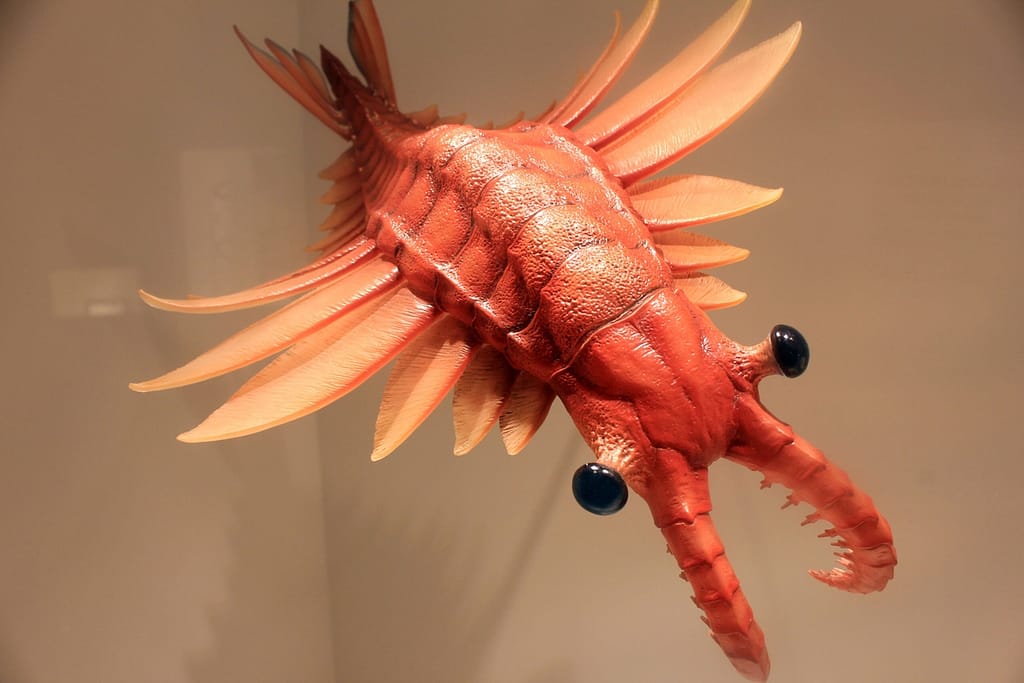
About Anomalocaris canadensis
Anomalocaris canadensis, the renowned radiodont measuring 60 cm, is a prominent figure from the Burgess Shale in Canada, existing 508 million years ago. Often hailed as the apex predator of its time, this creature has been traditionally depicted as a benthic hunter responsible for inflicting damage on trilobites. However, a recent analysis of its arachnid-like front appendages challenges this interpretation, revealing that Anomalocaris canadensis, despite being a raptorial predator, lacked the ability to crush biomineralized prey with these structures. The study indicates that the creature likely targeted mobile, soft-bodied prey in well-illuminated water columns.
The Questionable Interpretation
Initially discovered in the 1800s, Anomalocaris canadensis, meaning "weird shrimp from Canada" in Latin, has long been associated with the infliction of scars and crushing on trilobite exoskeletons. Dr. Russell Bicknell, a postdoctoral researcher at the American Museum of Natural History, found the conventional interpretation questionable, considering the robust exoskeleton of trilobites, essentially composed of rock, in contrast to the predominantly soft and pliable nature of the creature in question. Recent investigation into the armor-plated, ring-shaped mouthparts of Anomalocaris canadensis casts doubt on its capacity to process hard food. This latest study aims to examine whether the predator's elongated, spiny front appendages could fulfill this role instead.
Biomechanical Analysis
Utilizing the exquisitely preserved fossils from the Burgess Shale, the researchers reconstructed a 3D model of Anomalocaris canadensis. Drawing analogies from modern whip scorpions and whip spiders, they demonstrated that the segmented appendages of the predator were adept at capturing prey, possessing both extension and flexion capabilities. To analyze the stress and strain patterns associated with the grasping behavior of Anomalocaris canadensis, the researchers employed finite element analysis, revealing potential damage to the appendages when attempting to seize hard prey like trilobites. Incorporating computational fluid dynamics, the team simulated a virtual current to determine the probable swimming posture of the 3D predator model.
A Revised Understanding
The amalgamation of these biomechanical modeling techniques portrays a different narrative of Anomalocaris canadensis compared to previous assumptions. The creature likely swam swiftly, pursuing soft prey in the water column withits front appendages outstretched. Dr. Bicknell comments on the revised understanding: "Earlier conceptions suggested that these animals perceived the Burgess Shale fauna as an all-you-can-eat buffet, going after whatever they desired. However, we are discovering that the dynamics of Cambrian food webs were likely far more intricate than we had once imagined."
Publication
The findings of this study were published in the journal Proceedings of the Royal Society B.



